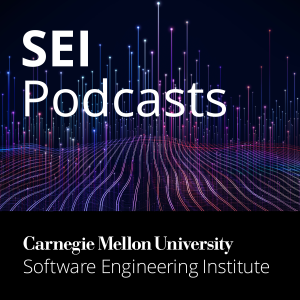Zero trust architecture has the potential to improve an enterprise’s security posture. There is still considerable uncertainty about the zero trust transformation process, however, as well as how zero trust architecture will ultimately appear in practice. Recent executive orders have accelerated the timeline for zero trust adoption in the federal sector, and many private-sector organizations are following suit. Researchers in the CERT Division at the Carnegie Mellon University Software Engineering Institute (SEI) hosted Zero Trust Industry Days to enable industry stakeholders to share information about implementing zero trust. In this SEI podcast, CERT researchers Matthew Nicolai and Nathaniel Richmond discuss five zero trust best practices identified during the two-day event, explain their significance, and provide commentary and analysis on ways to empower your organization’s zero trust transformation.
More Episodes
Agile Acquisition
 2012-09-04
2012-09-04
An Architecture-Focused Measurement Framework for Managing Technical Debt
 2012-09-04
2012-09-04
Cloud Computing for the Battlefield
 2012-09-04
2012-09-04
U.S. Postal Inspection Service Use of the CERT Resilience Management Model
 2012-08-21
2012-08-21
Insights from the First CERT Resilience Management Model Users Group
 2012-07-17
2012-07-17
NIST Catalog of Security and Privacy Controls, Including Insider Threat
 2012-04-24
2012-04-24
Cisco's Adoption of CERT Secure Coding Standards
 2012-02-28
2012-02-28
How to Become a Cyber Warrior
 2012-01-31
2012-01-31
Considering Security and Privacy in the Move to Electronic Health Records
 2011-12-20
2011-12-20
Measuring Operational Resilience
 2011-10-04
2011-10-04
Why Organizations Need a Secure Domain Name System
 2011-09-06
2011-09-06
Controls for Monitoring the Security of Cloud Services
 2011-08-02
2011-08-02
Building a Malware Analysis Capability
 2011-07-12
2011-07-12
Using the Smart Grid Maturity Model (SGMM)
 2011-05-05
2011-05-05
Integrated, Enterprise-Wide Risk Management: NIST 800-39 and CERT-RMM
 2011-03-29
2011-03-29
Conducting Cyber Exercises at the National Level
 2011-02-22
2011-02-22
Indicators and Controls for Mitigating Insider Threat
 2011-01-25
2011-01-25
How Resilient Is My Organization?
 2010-12-09
2010-12-09
Public-Private Partnerships: Essential for National Cyber Security
 2010-11-30
2010-11-30
Software Assurance: A Master's Level Curriculum
 2010-10-26
2010-10-26
Create your
podcast in
minutes
- Full-featured podcast site
- Unlimited storage and bandwidth
- Comprehensive podcast stats
- Distribute to Apple Podcasts, Spotify, and more
- Make money with your podcast
It is Free

- Privacy Policy
- Cookie Policy
- Terms of Use
- Consent Preferences
- Copyright © 2015-2024 Podbean.com



 iOS
iOS Android
Android

